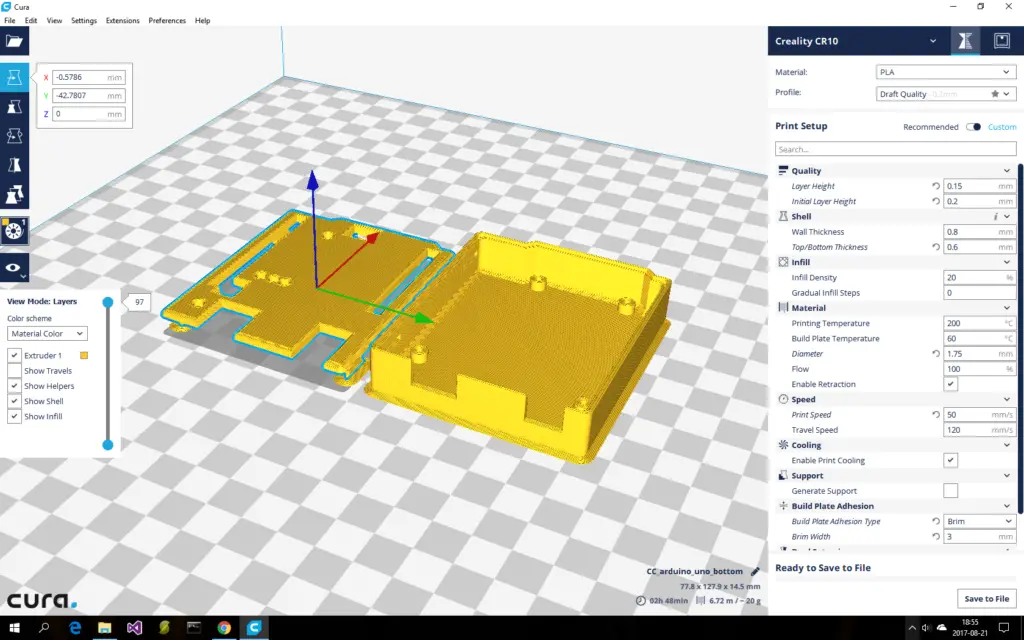
UpPin until limitFloor level and then stopĬase CLOSED: state = state_CLOSED() break Ĭase OPENING: state = state_OPENING() break Ĭase UNFOLDING: state = state_UNFOLDING() break Ĭase DOWN_TO_FLOOR: state = state_DOWN_TO_FLOOR() break Ĭase FLOOR: state = state_FLOOR() break Ĭase DOWN_TO_GROUND: state = state_DOWN_TO_GROUND() break Ĭase GROUND: state = state_GROUND() break Ĭase UP_TO_FLOOR: state = state_UP_TO_FLOOR() break Ĭase UP_TO_STOW: state = state_UP_TO_STOW() break Ĭase FOLDING: state = state_FOLDING() break Ĭase CLOSING: state = state_CLOSING() break ĭigitalWrite(OpenPin, digitalRead(buttonDownPin)=LOW) ĭigitalWrite(deployPin, digitalRead(buttonDownPin)=LOW) ĭigitalWrite(downPin, digitalRead(buttonDownPin)=LOW) ĭigitalWrite(upPin, digitalRead(buttonUpPin)=LOW) ĭigitalWrite(stowPin, digitalRead(buttonUpPin)=LOW) ĭigitalWrite(ClosePin, digitalRead(buttonUpPin)=LOW) Press buttonDownPin again to lower lift to ground - limitDown

Lift lowers (downPin) until limitFloor and stops Lift fully unfolds (deployPin) and hits limitDeploy Van door fully opens (openPin) and hits limitOpenPin Is there any specific reason for using one versus the other? Maybe in a longer program where memory is an issue the switch/case would save room or speed things up? I'll post the two complete programs below. This is how I have my if/else program set up. This part isn't making sense to me, I thought if you let go of the button the program should stop. Is my thinking correct? The problem is, when I load the switch/case code and activate buttonDownPin the program just runs all the way through state to state and I have to unplug the arduino to get it to stop. What this seems to me is that it will write the deployPin equal to buttonDownPin only while buttonDownPin is LOW. One part I can't figure out though is the following line: digitalWrite(deployPin, digitalRead(buttonDownPin)=LOW) I had to print out his code and study it for quite some time for it to make sense to me, it finally does. PaulMurra圜br (thanks again Paul) was awesome enough to write an entire program with switch/case to perform the same functions. The concept of state machine kept coming up over and over during my newbie questions and the final project ended up with a pseudo state machine using if/else commands. The characters a, b, c, d, and e, will turn on LEDs.With the help of many on this forum I completed my first arduino project.
SELECT CASE ARDUINO SERIAL
To see this sketch in action, open the Serial monitor and send any character. Statement allows you to choose from among a set of discrete values For more circuit examples, see the Fritzing project pageĭemonstrates the use of a switch statement. Open the Serial Monitor, and send the characters a, b, c, d, or e, or anything else. To make this sketch work, your Arduino must be connected to your computer. Arduino Tutorial Online Courses Video Training.

SELECT CASE ARDUINO PDF
Arduino Nano Projects List in PDF offline downloadable.
SELECT CASE ARDUINO ANDROID


 0 kommentar(er)
0 kommentar(er)
